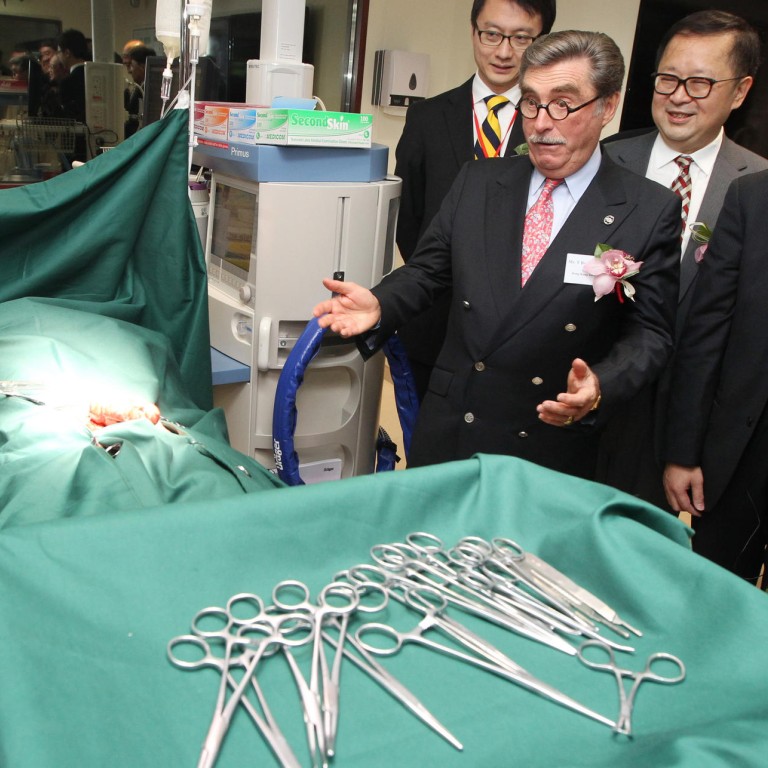
Virtual reality takes aspiring doctors to the next level
Aspiring doctors and nurses can now hone their skills at the Academy of Medicine's new state-of-the-art simulation centre. Built by the Jockey Club at a cost of HK$53 million, the Innovative Learning Centre for Medicine boasts a variety of facilities, which aim to give medical students and junior doctors "hands-on" experience - much of it in virtual reality.
Inside a brightly lit Aberdeen office, a medical student digs into a patient's chest cavity looking for a blocked coronary artery during a tense, but bloodless, heart bypass surgery.
None of it is actually real - but it is the closest thing to it.
Aspiring doctors and nurses can now hone their skills at the Academy of Medicine's new state-of-the-art simulation centre. Built by the Jockey Club at a cost of HK$53 million, the Innovative Learning Centre for Medicine boasts a variety of facilities, which aim to give medical students and junior doctors "hands-on" experience - much of it in virtual reality.
The facilities include mocked-up operating theatres and procedural skills rooms equipped with devices for performing digital "keyhole surgeries". These cover anything from removing gall bladders and conducting endoscopes to minimally invasive heart surgery.
Doctors, midwives and nurses-in-training can also use obstetric mannequins to simulate emergency labour and delivery. The "intelligent dummies" are fitted with their own heart rate, pulse and dilatable pupils.
Trainees' performances can be observed from behind one-way mirrors fitted in each room.
"Simulated training is a safer and much more efficient way of training medical professionals," said academy president Dr Donald Li Kwok-tung.
"It provides opportunities for them to experience adverse or sudden situations in a safe and controlled environment."
Health authorities of the future will also get a chance to try out in virtual reality what may perhaps be the hardest part of their job - facing the press.
A "virtual reality" procedural skills room recreates a press conference, where the trainee can practise answering - or deflecting - questions in the event of an emergency press briefing.
Li said the next step would be to provide more virtual-reality disaster or accident-response scenarios.
The Hospital Authority has eight institutions that have their own simulators. But the academy's 550 square metre facility is the city's first integrated simulation centre.
Permanent Secretary for Food and Health Richard Yuen Ming-fai said the entire city would benefit from the facility as demand for hospital care and health-care professionals was expected to soar further amid a rapidly ageing population.

